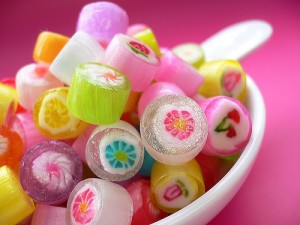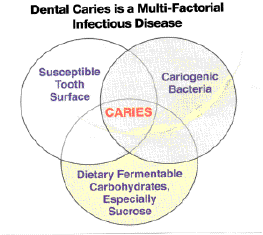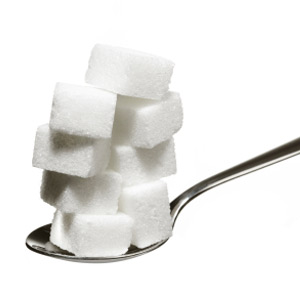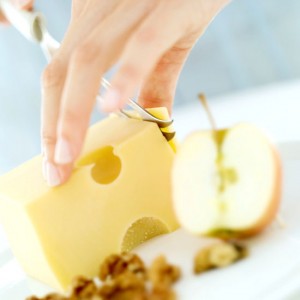Sweets are a bane to our teeth. Not only do they cause cavities in our mouth, they could also be detrimental to our health if consumed in large amounts. Teeth cavities (also known as dental caries in dental terms) is a common plaque-dependent bacterial infection that is strongly affected by diet.
Sugar and cavities
Development of tooth cavities depends upon the interaction of four interrelated factors in the mouth:
- a susceptible tooth,
- bacteria that can produce cavities,
- time and
- fermentable carbohydrate.
Absence of one of these factors dramatically reduces dental cavity risk.
Without bacteria, no dental decay can develop. For the bacteria in the plaque to live, they must have the same amino acids, carbohydrates, fatty acids, vitamins, and minerals that are required for all living organisms. Because these nutrients are also required by the cells of the body, the food that is ingested by the host or that which later appears in the saliva in a metabolized form provides adequate nutrients for bacterial survival and reproduction.
With three well-balanced meals per day, however, the usual plaque bacteria probably would not release a sufficient quantity of metabolic acids to cause cavity development. But, as soon as sugar and sugar products are included in the diet of the host, bacterial acid production markedly increases in the plaque. This release of acid end-products is the major cause of the initiation and progression of cavities.
Of even greater importance than the total intake of refined carbohydrates are the frequency of intake and the consistency of the sugar-containing foods. The continuous snacking of refined carbohydrates that characterizes modern living results in the teeth being constantly exposed to bacterial acids. Thus, if cavities incidence is to be reduced, all three factors – total intake of sugar, concentration of sugar and stickiness of a food, and especially frequency of intake should be considered.
Classification of sugars for dental health purposes
Sugar is used to refer to the mono- and disaccharide members of the carbohydrate family.
- Monosaccharides include glucose (dextrose or corn sugar), fructose (fruit sugar), galactose and mannose.
- Disaccharides include lactose (in milk), maltose and sucrose (cane or beet sugar).
- Polysaccharides (starch) are chains of glucose molecules and are not readily broken down by the microorganism present in the mouth.
- Dietary sugars have been classified as intrinsic when they are part of the cells in a food (vegetable and fruit) or extrinsic (milk sugar or non-milk extrinsic sugar, for example table sugar). Both intrinsic and extrinsic sugars may cause decay, although non-milk extrinsic sugars are the most damaging for dental health.
The recommended intake of non-milk extrinsic sugars is a maximum of 60g/day, which is about 10% of daily energy intake. Raw starch (for example raw vegetables) is of low cavity potential. However cooked and highly refined starch (for example chips) can cause decay and combinations of cooked starch and sucrose (for example cakes, biscuits, and sugared breakfast cereals) can be highly cavity-producing.
Currently dietary advice recommends at least five portions of fruits and vegetables per day. Fruit contain sugars but fresh fruits appear to be of low cavity potential. However the same cannot be said for fruit juice. The juicing process releases the sugars form the whole fruit and these drinks are potentially cavity-producing. Dried fruits are also high in decay potential. These products are sticky, tending to stick to teeth and the drying process releases some of the intrinsic sugars.
Dietary advice for preventing dental cavities
Sugary foods or drinks between meals are particularly harmful and should be avoided in the cavity-prone individual. Fruits, peanuts or cheese may be acceptable alternatives, although do remember that while these foods may represent a safe snack in dental terms, they are all high in fat, and peanuts should not be given to children under 5 years of age as there is a risk of death due to asphyxiation following inhaling of a single nut. The bed-time snack or drink is particularly important since salivary flow is virtually absent at night and plaque pH may remain low for many hours.
It is neither necessary nor practical to stop children eating sweets altogether. However it is unreasonable to suggest that they are restricted one day a week. In any case, children should be encouraged to eat a balanced meal before any sweets are given. If sweets are eaten afterwards, they will do least damage as part of a main meal.
Adults should also be advised not to eat sugary snacks between meals, but if sugary snack are cut out of the diet the individual may feel hungry and thus a list of snack-foods and drinks with low potential for dental caries is useful so that the individual may suggest a suitable alternative. However, it is often sweetened drinks that are the problem, and here sugar substitutes can be very helpful.




very informative post, those who love to eat sweets, should take time to properly maintain their teeth and oral health
thank you for the comment.
Take good care of your teeth. A disciplined dental hygienic routine of caring for your teeth is still the best way to avoid tooth decay. Use a toothbrush with bristles that are medium to soft and a good quality toothpaste with fluoride. Fluoride is the active ingredient in the toothpaste that eliminates plaque from your teeth that causes cavities. Get rid of those food particles that are trapped between your teeth by regularly flossing. You should also brush your tongue to remove bacteria that contributes to bad breath and poor oral health.